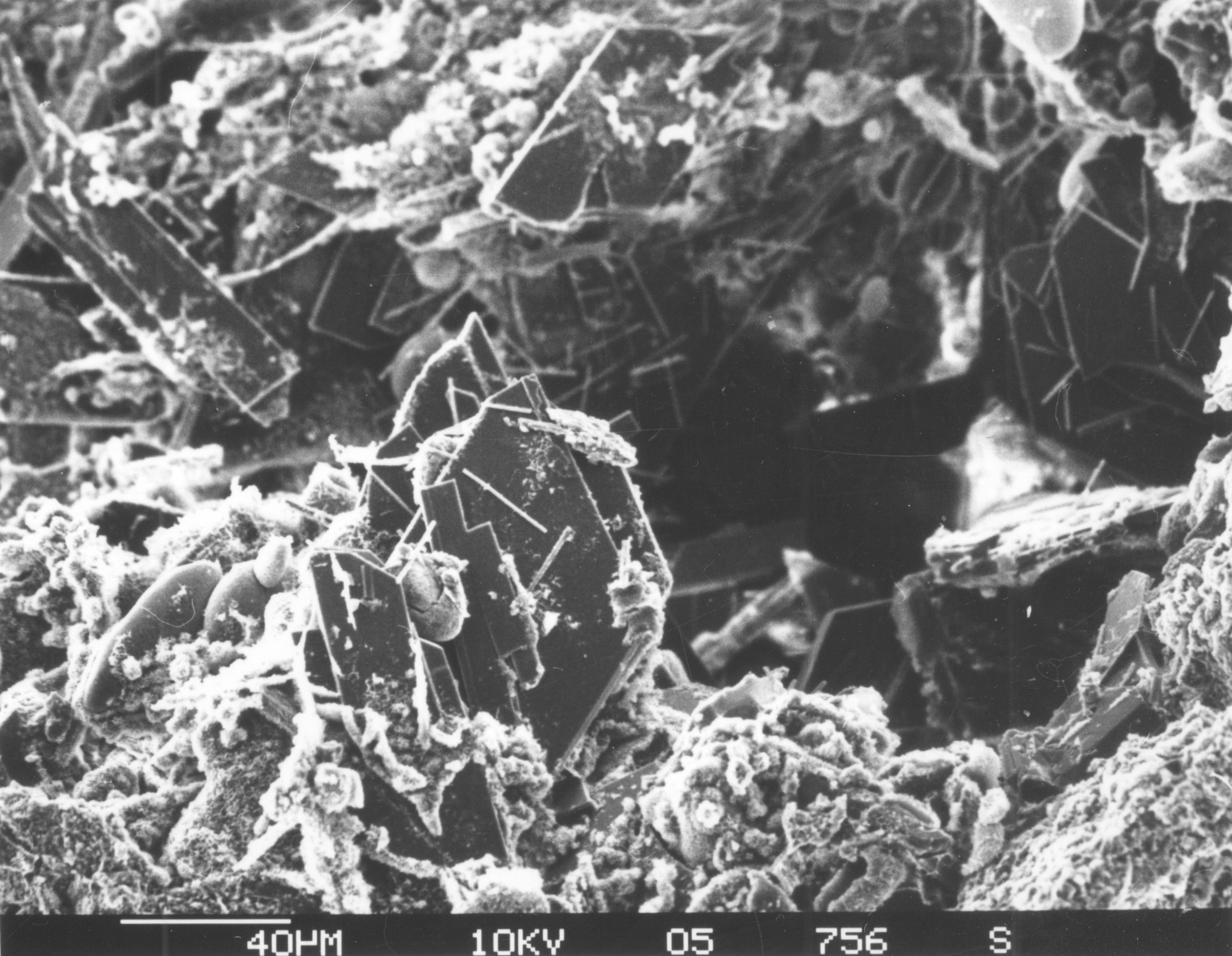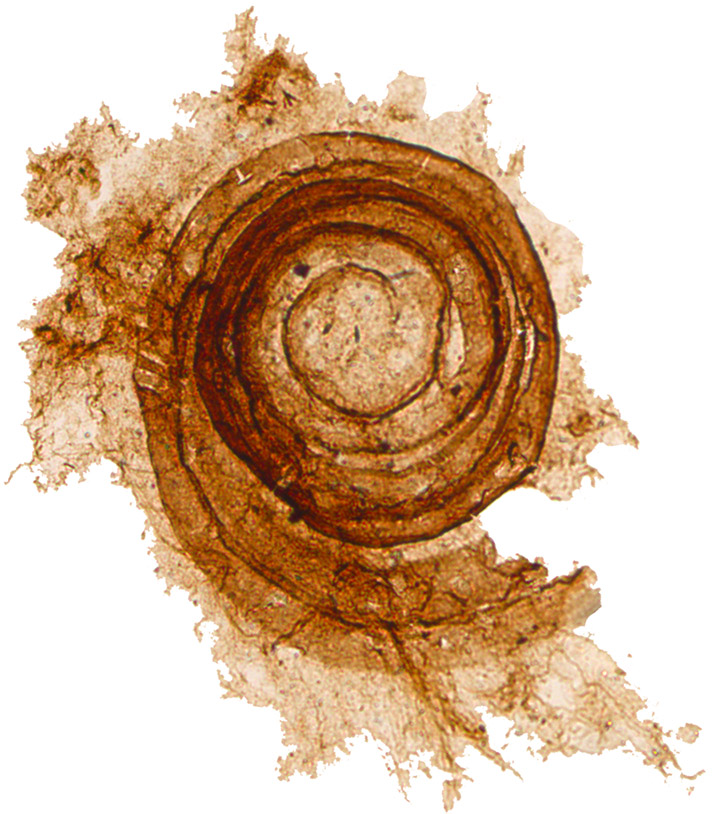|
Pelagic Sediment
Pelagic sediment or pelagite is a fine-grained sediment that accumulates as the result of the settling of particles to the floor of the open ocean, far from land. These particles consist primarily of either the microscopic, calcareous or siliceous shells of phytoplankton or zooplankton; clay-size siliciclastic sediment; or some mixture of these. Trace amounts of meteoric dust and variable amounts of volcanic ash also occur within pelagic sediments. Based upon the composition of the ooze, there are three main types of pelagic sediments: siliceous oozes, calcareous oozes, and red clays.Rothwell, R.G., (2005) ''Deep Ocean Pelagic Oozes'', Vol. 5. of Selley, Richard C., L. Robin McCocks, and Ian R. Plimer, Encyclopedia of Geology, Oxford: Elsevier Limited. HüNeke, H., and T. Mulder (2011) ''Deep-Sea Sediments''. Developments in Sedimentology, vol. 63. Elsiever, New York. 849 pp. The composition of pelagic sediments is controlled by three main factors. The first factor is the dis ... [...More Info...] [...Related Items...] OR: [Wikipedia] [Google] [Baidu] |
Sediment
Sediment is a naturally occurring material that is broken down by processes of weathering and erosion, and is subsequently transported by the action of wind, water, or ice or by the force of gravity acting on the particles. For example, sand and silt can be carried in suspension in river water and on reaching the sea bed deposited by sedimentation; if buried, they may eventually become sandstone and siltstone (sedimentary rocks) through lithification. Sediments are most often transported by water (fluvial processes), but also wind (aeolian processes) and glaciers. Beach sands and river channel deposits are examples of fluvial transport and deposition, though sediment also often settles out of slow-moving or standing water in lakes and oceans. Desert sand dunes and loess are examples of aeolian transport and deposition. Glacial moraine deposits and till are ice-transported sediments. Classification Sediment can be classified based on its grain size, grain shape, and c ... [...More Info...] [...Related Items...] OR: [Wikipedia] [Google] [Baidu] |
Authigenic Mineral
Authigenesis is the process whereby a mineral or sedimentary rock deposit is generated where it is found or observed. Such deposits are described as authigenic. Authigenic sedimentary minerals form during sedimentation by precipitation or recrystallization instead of being transported from elsewhere (allogenic) by water or wind. Authigenic sediments are the main constituents of deep sea sedimentation. Authigenic clays tend to reduce the porosity of sediments, thus reducing permeability. In metamorphic petrology an authigenic mineral is one formed ''in situ'' during metamorphism, again by precipitation from fluids or recrystallization. For any mineral to be precipitated, the water must be supersaturated with respect to that mineral. For calcite, this means that the area of deposition must be above the carbonate compensation depth, or that the pore waters are sufficiently saturated due to dissolution of other grains that precipitation can begin. The alkalinity can also be reduc ... [...More Info...] [...Related Items...] OR: [Wikipedia] [Google] [Baidu] |
Microfossil
A microfossil is a fossil that is generally between 0.001 mm and 1 mm in size, the visual study of which requires the use of light or electron microscopy. A fossil which can be studied with the naked eye or low-powered magnification, such as a hand lens, is referred to as a macrofossil. Microfossils are a common feature of the geological record, from the Precambrian to the Holocene. They are most common in deposits of marine environments, but also occur in brackish water, fresh water and terrestrial sedimentary deposits. While every kingdom of life is represented in the microfossil record, the most abundant forms are protist skeletons or microbial cysts from the Chrysophyta, Pyrrhophyta, Sarcodina, acritarchs and chitinozoans, together with pollen and spores from the vascular plants. Overview A microfossil is a descriptive term applied to fossilized plants and animals whose size is just at or below the level at which the fossil can be analyzed by the naked eye. A ... [...More Info...] [...Related Items...] OR: [Wikipedia] [Google] [Baidu] |
Clay Mineral
Clay minerals are hydrous aluminium phyllosilicates (e.g. kaolin, Al2 Si2 O5( OH)4), sometimes with variable amounts of iron, magnesium, alkali metals, alkaline earths, and other cations found on or near some planetary surfaces. Clay minerals form in the presence of water and have been important to life, and many theories of abiogenesis involve them. They are important constituents of soils, and have been useful to humans since ancient times in agriculture and manufacturing. Properties Clay is a very fine-grained geologic material that develops plasticity when wet, but becomes hard, brittle and non–plastic upon drying or firing. It is a very common material, and is the oldest known ceramic. Prehistoric humans discovered the useful properties of clay and used it for making pottery. The chemistry of clay, including its capacity to retain nutrient cations such as potassium and ammonium, is important to soil fertility. Because the individual particles in clay are less than ... [...More Info...] [...Related Items...] OR: [Wikipedia] [Google] [Baidu] |
Quartz
Quartz is a hard, crystalline mineral composed of silica (silicon dioxide). The atoms are linked in a continuous framework of SiO4 silicon-oxygen tetrahedra, with each oxygen being shared between two tetrahedra, giving an overall chemical formula of SiO2. Quartz is the second most abundant mineral in Earth's continental crust, behind feldspar. Quartz exists in two forms, the normal α-quartz and the high-temperature β-quartz, both of which are chiral. The transformation from α-quartz to β-quartz takes place abruptly at . Since the transformation is accompanied by a significant change in volume, it can easily induce microfracturing of ceramics or rocks passing through this temperature threshold. There are many different varieties of quartz, several of which are classified as gemstones. Since antiquity, varieties of quartz have been the most commonly used minerals in the making of jewelry and hardstone carvings, especially in Eurasia. Quartz is the mineral defining the val ... [...More Info...] [...Related Items...] OR: [Wikipedia] [Google] [Baidu] |
Aeolian Processes
Aeolian processes, also spelled eolian, pertain to wind activity in the study of geology and weather and specifically to the wind's ability to shape the surface of the Earth (or other planets). Winds may erode, transport, and deposit materials and are effective agents in regions with sparse vegetation, a lack of soil moisture and a large supply of unconsolidated sediments. Although water is a much more powerful eroding force than wind, aeolian processes are important in arid environments such as deserts. The term is derived from the name of the Greek god Aeolus, the keeper of the winds. Definition and setting ''Aeolian processes'' are those processes of erosion, transport, and deposition of sediments that are caused by wind at or near the surface of the earth. Sediment deposits produced by the action of wind and the sedimentary structures characteristic of these deposits are also described as ''aeolian''. Aeolian processes are most important in areas where there is little or ... [...More Info...] [...Related Items...] OR: [Wikipedia] [Google] [Baidu] |
Dictyochales
Dictyochales (Silicoflagellates, or Dictyochophyceae ''sensu stricto'') are a small group of unicellular heterokont algae, found in marine environments. Characteristics In one stage of their life cycle, they produce a siliceous skeleton, composed of a network of bars and spikes arranged to form an internal basket. These form a small component of marine sediments, and are known as microfossils from as far back as the early Cretaceous. Classification The algae in the Dictyochophyceae have been previously classified in the Chrysophyceae. There is one living genus, ''Dictyocha'', with two commonly recognised species. There are also several extinct genera, but their classification is difficult, since skeletons may show diverse forms within each living species. ''Dictyocha'' has one golden-brown chloroplast and a long flagellum extended into a wing-like shape. The skeleton-bearing stage is uninucleate, with many microtubule-supported projections, and there are also uninucleate an ... [...More Info...] [...Related Items...] OR: [Wikipedia] [Google] [Baidu] |
Spicule (sponge)
Spicules are structural elements found in most Sea sponge, sponges. The meshing of many spicules serves as the sponge's skeleton and thus it provides structural support and potentially defense against predators. Sponge spicules are made of calcium carbonate or Silicon dioxide, silica. Large spicules visible to the naked eye are referred to as megascleres, while smaller, microscopic ones are termed microscleres. The composition, size, and shape of spicules are major characters in sponge systematics and Taxonomy (biology), taxonomy. Overview Sponges are a species-rich clade of the earliest-diverging (most Basal (phylogenetics), basal) animals. They are distributed globally, with diverse ecologies and functions, and a record spanning at least the entire Phanerozoic. Most sponges produce skeletons formed by spicules, structural elements that develop in a wide variety of sizes and three dimensional shapes. Among the four sub-clades of Porifera, three (Demospongiae, Hexactinelli ... [...More Info...] [...Related Items...] OR: [Wikipedia] [Google] [Baidu] |
Sponge
Sponges, the members of the phylum Porifera (; meaning 'pore bearer'), are a basal animal clade as a sister of the diploblasts. They are multicellular organisms that have bodies full of pores and channels allowing water to circulate through them, consisting of jelly-like mesohyl sandwiched between two thin layers of cells. Sponges have unspecialized cells that can transform into other types and that often migrate between the main cell layers and the mesohyl in the process. Sponges do not have nervous, digestive or circulatory systems. Instead, most rely on maintaining a constant water flow through their bodies to obtain food and oxygen and to remove wastes. Sponges were first to branch off the evolutionary tree from the last common ancestor of all animals, making them the sister group of all other animals. Etymology The term ''sponge'' derives from the Ancient Greek word ( 'sponge'). Overview Sponges are similar to other animals in that they are multicellular, he ... [...More Info...] [...Related Items...] OR: [Wikipedia] [Google] [Baidu] |
Siliceous Ooze
Siliceous ooze is a type of biogenic pelagic sediment located on the deep ocean floor. Siliceous oozes are the least common of the deep sea sediments, and make up approximately 15% of the ocean floor. Oozes are defined as sediments which contain at least 30% skeletal remains of pelagic microorganisms. Siliceous oozes are largely composed of the silica based skeletons of microscopic marine organisms such as diatoms and radiolarians. Other components of siliceous oozes near continental margins may include terrestrially derived silica particles and sponge spicules. Siliceous oozes are composed of skeletons made from opal silica Si(O2), as opposed to calcareous oozes, which are made from skeletons of calcium carbonate organisms (i.e. coccolithophores). Silica (Si) is a bioessential element and is efficiently recycled in the marine environment through the silica cycle. Distance from land masses, water depth and ocean fertility are all factors that affect the opal silica content in sea ... [...More Info...] [...Related Items...] OR: [Wikipedia] [Google] [Baidu] |
Carbonate Compensation Depth
Carbonate compensation depth (CCD) is the depth in the oceans below which the rate of supply of calcite ( calcium carbonate) lags behind the rate of solvation, such that no calcite is preserved. Shells of animals therefore dissolve and carbonate particles may not accumulate in the sediments on the sea floor below this depth. Aragonite compensation depth (hence ACD) describes the same behaviour in reference to aragonitic carbonates. Aragonite is more soluble than calcite, so the aragonite compensation depth is generally shallower than the calcite compensation depth. Overview As shown in the diagram, biogenic calcium carbonate (CaCO3) tests are produced in the photic zone of the oceans (green circles). Upon death, those tests escaping dissolution near the surface, settle along with clays materials. In seawater, a dissolution boundary is formed as a result of temperature, pressure, and depth, and is known as the ''saturation horizon''. Above the saturation horizon, waters are ... [...More Info...] [...Related Items...] OR: [Wikipedia] [Google] [Baidu] |









.jpg)
